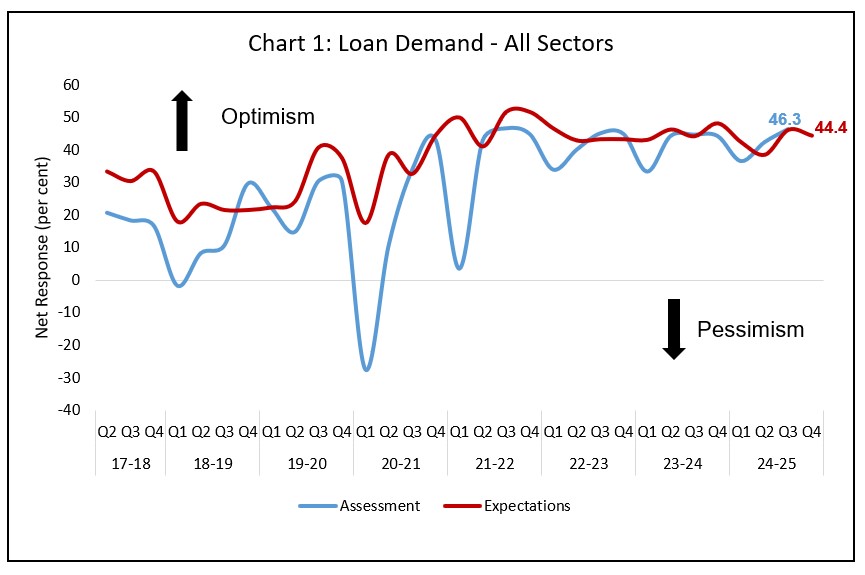 IST,
IST,
Bank Lending Survey for Q3:2024-25
|
Today, the Reserve Bank released the results of 30th round of its quarterly Bank Lending Survey1, which captures qualitative assessment and expectations of major scheduled commercial banks on credit parameters (viz., loan demand as well as terms and conditions of loans) for major economic sectors2. The latest round of the survey, which was conducted during Q3:2024-25, collected senior loan officers’ assessment of credit parameters for Q3:2024-25 and their expectations for Q4 of 2024-25 and Q1 and Q2 of 2025-26. Highlights: A. Assessment for Q3:2024-25
B. Expectations for Q4:2024-25
C. Expectations for Q1:2025-26 and Q2:2025-26

Note: Please see the attached excel file for detailed time series data. 1 The results of 29th round of the BLS with reference period as July-September 2024 were released on the RBI website on October 09, 2024. The survey results reflect the views of the respondents, which are not necessarily shared by the Reserve Bank. 2 The survey questionnaire is canvassed among major 30 SCBs, which together account for over 90 per cent of credit by SCBs in India. 3 Net Response (NR) is computed as the difference of percentage of banks reporting increase/optimism and those reporting decrease/pessimism in respective parameter. The weights of +1.0, 0.5, 0, -0.5 and -1.0 are assigned for computing NR from aggregate per cent responses on 5-point scale, i.e., substantial increase/ considerable easing, moderate increase/ somewhat easing, no change, moderate decrease/ somewhat tightening, substantial decrease/ considerable tightening for loan demand/loan terms and conditions parameters respectively. NR ranges between -100 to 100. Any value greater than zero indicates expansion/optimism and any value less than zero indicates contraction/pessimism. Increase in loan demand is considered optimism (Tables 1), while for loan terms and conditions, a positive value of net response indicates easy terms and conditions (Table 2). |
||||||||||||||||||||||||||||||||||||||||||||||||||||||
ਪੇਜ ਅੰਤਿਮ ਅੱਪਡੇਟ ਦੀ ਤਾਰੀਖ:

















